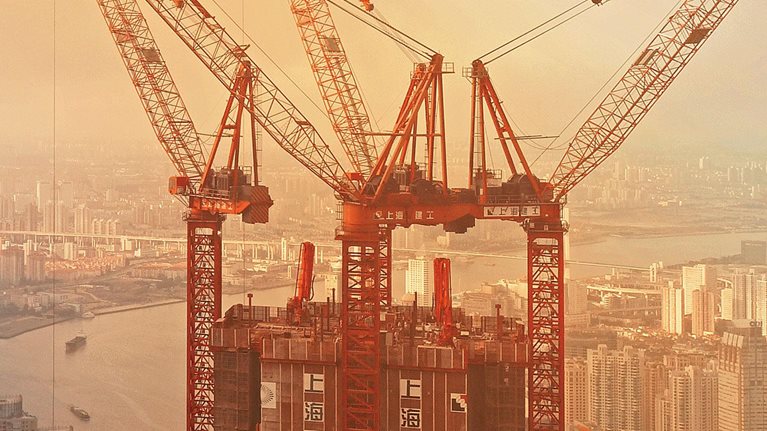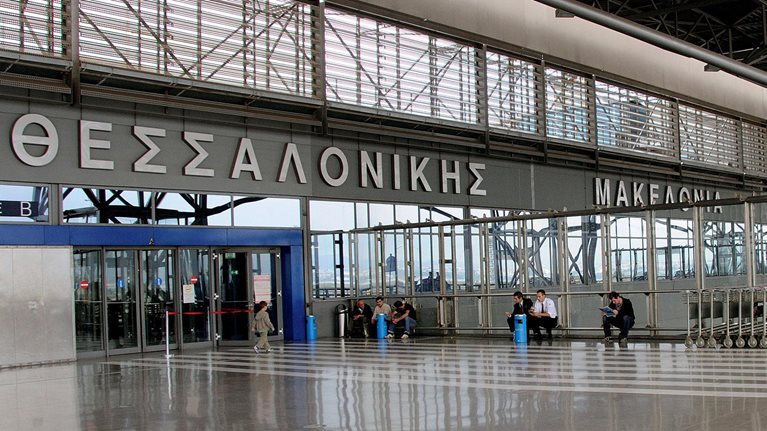Madeleine Albright is well known for her work in international relations, geopolitics, and systems of government. In recent years, the former US secretary of state has turned her attention to a new field—infrastructure—in her role as chair of the Albright Stonebridge Group, a global strategy group, and Albright Capital Management, an investment-strategy firm that focuses on emerging markets. In this interview with McKinsey, Albright discusses how infrastructure can provide the foundation for stable and prosperous societies.
McKinsey: Why are you interested in infrastructure?
Madeleine Albright: At its most fundamental level, when infrastructure is well planned, designed, and built, it provides the physical framework for a modern, healthy, and prosperous society. Whether we're talking about telecommunications, transportation, power and water, or public buildings such as schools and hospitals, infrastructure touches every aspect of the way we live. I have a saying that infrastructure is about a lot more than cement. What that means is that infrastructure is an integral component of the system of society. It allows us to communicate, to move people and goods, and to improve our quality of life by propelling research, education, and commerce. In short, it enables the transformation of individual ideas into action.
McKinsey: How do you connect your work on infrastructure with some of the other topics for which you are well known?
Madeleine Albright: Infrastructure is central to most of the issues that I have always cared about—whether I was working in the public sector as a professor or now as chair of the Albright Stonebridge Group—because it forms the basis for social stability, human rights, freedom, and equality. It can play a critical role in either exacerbating or reducing the gap between the rich and the poor. And the quality of infrastructure is also very important, because it’s not just about building something. Infrastructure that advances a society involves extensive planning and is built in the right place for the right purpose. I continue to enlarge my definition of infrastructure; it is the framework and basis for many aspects of domestic and foreign policy.
McKinsey: What kind of questions—or challenges—does infrastructure raise in developing economies versus developed ones?
Madeleine Albright: The fundamental rationale is the same in both developed and developing economies. Being able to build a road, bridge, or school unlocks enormous economic and social potential in developing countries, and also in developed countries. Because, as we all know, infrastructure is not limited to a single event. It is a process that you have to keep working on and perfecting—in terms of planning, financing, operating, and maintaining. This is certainly true in the United States, where our bridges and roads are aging and need repair. As international travel and trade among countries continues to grow, certain types of infrastructure—ports and airports, for example—are becoming more important in both developing and developed economies.

Voices on Infrastructure, Number 3
But obviously there are differences. I think there is a different emphasis in terms of where you want to put your money and what types of projects you pursue. In developing economies where so many needs are still not met—some of the most basic human needs—infrastructure priorities and projects will differ. We also see more opportunities to build completely new infrastructure—and, in some cases, new cities—in developing economies, which present an opportunity to incorporate the latest thinking in socially and environmentally sustainable design. In some cases, developing economies actually have an advantage because they can learn from what has come before and “leapfrog” outdated solutions that make up so much of the built environment in the developed world. We can see a good example of this in the rapid adoption of cell phones in developing countries, which has circumvented the need for stringing traditional telephone wires. There are similar opportunities for leapfrogging in clean energy, efficient urban mobility, and other areas.
McKinsey: Yet rallying public support for infrastructure projects can be difficult. Can you articulate the communication challenge?
Madeleine Albright: Part of the difficulty lies in the fact that you are building for the future, not today. Getting buy-in from citizens who are paying their taxes now or from investors, who are looking for assurances of project viability and stability, is challenging, particularly when a project may not be operational for five to ten years. Still, I think we can do more to communicate with the public about the importance of infrastructure.
In our excitement over a project and what it might deliver, we sometimes overlook the softer side of infrastructure development. So we have to ask questions: What exactly are we building and why? How much does the larger community know about this project? Have their views and concerns been taken into account in the planning phases? Taking the time to think about those messages and to have open discussions with the public about a project before it begins is very important. This may sound very basic, but it doesn’t always happen.
I will give you an example. A few years ago, we visited neighborhoods in a capital city in Africa for a project related to legal empowerment of the poor. When we spoke with people, the first question they asked was whether we were associated with the people who brought the wells. And then they told us how, one day, these strangers came in and said that the water the neighborhood had been using for many years was not clean. And they unveiled new wells. But the citizens didn’t understand why they couldn’t continue using the same water source they had always relied on, like their parents had before them. And they resented this intrusion into their way of life. I think this illustrates why it is important to communicate with people as early as possible and to ensure that communication remains ongoing throughout a project.
Last, I think that you have to have confidence in your citizens, and the exchange of information builds respect and signals that you have confidence in one another. It forms the foundation for a successful infrastructure project—one that brings people together, rather than dividing them.
McKinsey: How do you think about the roles of the public sector and the private sector in infrastructure?
Madeleine Albright: The roles differ a bit in each society, but generally speaking, you need a government—whether it is a national or local government—to bring structure and rigor to the infrastructure process. In general, the public sector is responsible for ensuring, through both carrots and sticks, that infrastructure is developed in a way that is consistent with the best interests and top priorities of the larger society. In urban planning, for example, the public sector plays a crucial role in developing the long-term plan and in thinking about laws to protect certain historic neighborhoods. The public sector usually has role in the financing, when public finances or assets are involved. And as I said, infrastructure is more than cement, so there is a regulatory aspect where the public sector may have to play a critical role, especially if you are talking about the environment and natural resources.
In many cases, the private sector provides the actual labor to build and maintain infrastructure, and sometimes it is very specialized labor. We were in Istanbul for the last Global Infrastructure Initiative conference, and I kept thinking: Can you imagine what it must be like to build a railway tunnel under the Bosporus? So, infrastructure projects require a lot of people with specialized training and expertise and often the public sector doesn’t have these people in house. Obviously the private sector can also play a critical role in financing and long-term planning.
McKinsey: Does government have to demonstrate a certain level of stability and quality to attract and safeguard infrastructure investments?
Madeleine Albright: I think this is a little bit of a chicken-and-egg question. Governance is based on people who actually know what is going on around them, and are supportive of it. And yet the public sector has to operate ahead of where the people are. Theoretically, the public sector is there to lead. And so, for example, if you have to move people and develop a different kind of community, I think it is very important to try to explain why it was necessary and how they are the beneficiaries of it.
Infrastructure projects can have positive effects and improve people’s confidence in their government, which means that they are willing to pay taxes and see what the government comes up with. But the truth is that before a major infrastructure project can be undertaken, the government has to demonstrate sufficient administrative capabilities, be able to prevent corruption, and demonstrate social stability, so that the planning process actually attracts investors.
Governance is a virtuous circle, if it works right. It is this exchange where the people have faith that their government is operating on their behalf. To earn that support, governments have to show that they are acting in the people’s best interest, rather than on behalf of some elite group. The most effective governing structures have this exchange of confidence between the public sector and its citizens.
McKinsey: How difficult is this confidence to achieve, particularly at a time when government coffers are under strain?
Madeleine Albright: I spend a great deal of time working on this, and it is hard. We are living in a period in which there is not a lot of confidence in institutions because they have not delivered for their citizens. One of the topics I talk about a lot is whether political development or economic development comes first. The truth is, they go together, because government has to deliver. I have this saying that people want to vote, but they also want to eat. So there has to be an incentive for having an elected government—what is the government going to do to improve the lives of its citizens? And that is why, for me, infrastructure is such a broad subject. You can build a road, but is it capable of making sure that the crops make their way into the city, so that urban markets have something to sell and people have food to eat? Government has to think about the broader effects of infrastructure development. We all do. The minute you decide that infrastructure is more than cement, you see it is pretty much everything.
McKinsey: As you said, the effects of infrastructure reverberate everywhere. What can be done to address the environmental impact of infrastructure?
Madeleine Albright: First, I think the challenge for engineers and builders is greater than ever, given the volatility we are witnessing in the natural environment. It requires foresight, and we must think about what might happen not only in 10 years, but also in 20, 30, and 40 years. And we all have a part to play in thinking about the environmental and social effects of the infrastructure process. You can build the most architecturally stunning city in the world, but will it matter if the traffic is impossible and the smog is so overpowering that you can’t look out the window and enjoy the view?
One of the reasons I look forward to the Global Infrastructure Initiative is that we have the opportunity to discuss all of these topics—the challenges and opportunities that infrastructure presents. The conference gathers very different people with unique specialties and interests—everyone from the environmental engineer to the city official—and it underscores how dependent we are on one another. To address these issues and develop sustainable infrastructure that unifies communities, we have to work together.
A new compendium of articles, Rethinking Infrastructure: Voices from the Global Infrastructure Initiative, has been released to coincide with McKinsey’s Global Infrastructure Initiative conference, to be held in Rio de Janeiro on May 28–30. For more information, visit McKinsey’s infrastructure practice website.


